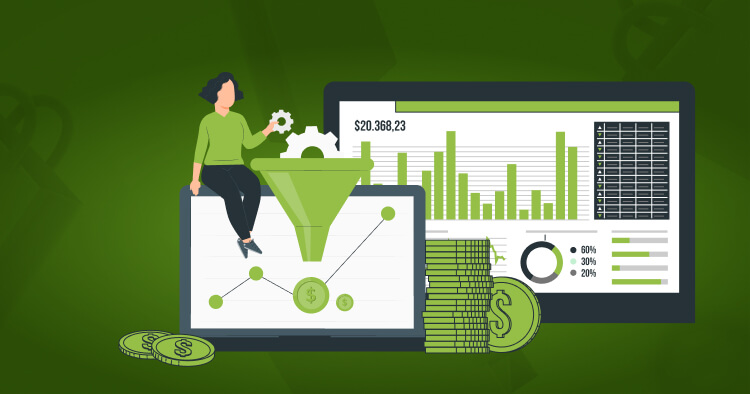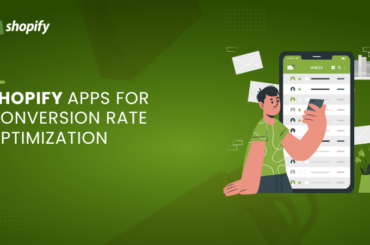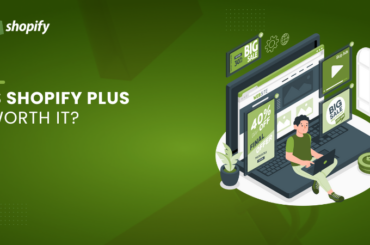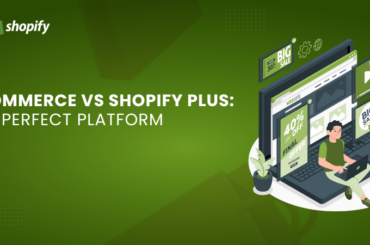Strategies for Shopify Conversion Rate Optimization in 2024
Last Updated | June 9, 2024
Table of Contents
Shopify Conversion Rate Optimization is paramount for the success of any Shopify store In the competitive eCommerce landscape. Businesses must continuously refine their strategies to enhance user experience, drive engagement, and boost sales to thrive in this digital marketplace.
This blog delves into proven tactics and optimization techniques specifically for Shopify stores, offering actionable insights to help businesses elevate their Shopify CRO effectively. By implementing these strategies, merchants can unlock the full potential of their online presence and achieve sustainable growth in today’s dynamic e-commerce environment.
Shopify Conversion Rates – An Overview
A Shopify conversion rate refers to the number of store visitors you get. Customers making a purchase is the most common conversion example on a Shopify eCommerce store. The Shopify conversion rate is calculated using this formula:
| Conversion Rate = Number of Conversions Total number of visitors x 100% |
Think of your business as a brick-and-mortar store for a moment. When customers browse the aisles (clicking through your website), they might put a few items in the cart (add to cart feature) but then leave those things there and leave (abandon cart). This sort of customer doesn’t count as a conversion.
To get conversions, customers need to complete the purchase process. Getting conversions doesn’t happen on its own; it requires proper funnels. These funnels include:
- Building brand awareness through social media, marketing, and word of mouth.
- Leveraging customer interest whenever they visit your store and browse the different products
- Customers add different products to their carts and weigh the pros and cons of the purchase.
- The customers complete the purchase and, hence, the conversion!
It is worth noting that conversion rates can vary depending on the industry. Your conversion rate will fluctuate depending on the niche, season, and demand, making tracking essential. Knowing your store’s performance helps implement strategies for improving conversions, such as building customer trust and optimizing product pages.
Best Shopify Store Optimization Strategies
Whether you’re starting with Shopify or a seasoned professional, use these tips to for the best Shopify CRO. Ensure you read them, then reread them, make notes, and continue learning. Let’s jump into it:
Analyzing Your Shopify Store
Start by gauging your store’s existing performance. Use Shopify analytics to understand visitor behaviors and traffic sources and monitor conversions. Use customer heatmaps to see which pages and menus get the most views, clicks, and scrolls. This will tell you what needs improvement and what doesn’t.
If you run a store selling stainless steel jewelry, you can use Shopify analytics to discover that most customers came from Instagram ads, but not all added mugs to their carts. With heatmaps, you learn that customers scroll past product descriptions without expanding them. This insight prompts you to optimize product listings to have the right keywords, less fluff, and cover all essential bases.
Optimizing Shopify Stores for Conversions
Shopify analytics lets you know where visitors are coming from and what they do on your store, making optimization more straightforward. Some of the most essential Shopify store optimization strategies include:
- Clear and concise product pages
- Using high-quality images and infographics
- Use strong CTAs, e.g., Buy Now or Add to Cart
Streamlining the Checkout Process
The checkout process should have as few hurdles as possible. Streamline your store’s checkout by avoiding customer account creation and offering guest checkout as a replacement. Additionally, your store should accept different payment methods, i.e., credit and debit cards, PayPal, and Apple Pay.
You got the customer to add products to their cart, but there was a multi-page checkout process. They immediately thought it was too much effort and abandoned the cart, costing you revenue. Adding guest checkout lets them visit, add to their cart, checkout, and get their product from one page, a maximum of two. This might prompt them to come back and create an account in the future since the first time was so seamless.
Using Social Proof and Reviews
Social proof is a phenomenon in which customers prefer to buy products with reviews, preferably positive ones. If customers purchase and like your product, ask them to leave a review on the website.
Incentivize customers with a coupon for their next purchase to get social proof and a return customer. Your Shopify store should display customer reviews, testimonials, partnering brands, and relevant certifications.
Customization Techniques
Your Shopify store should combine form and function with appealing visuals and intuitive functionality. You can pick from several pre-made Shopify store themes, customization options, and applications from the Shopify app store.
Use customer interaction data based on browser and purchase history to create targeted marketing campaigns. Incentivize customers to spread the word with discounts and free resources where possible.
Using Effective Marketing
Your business could have the best product or service, but it won’t generate sales if people don’t know about it. Various marketing strategies can effectively boost sales and attract new customers.
Use multiple digital marketing mediums to spread the word and ensure as many people see your business as possible. Use social media channels, the best SEO practices, and email marketing, just to name a few. You want your messaging to reach the right people for the best chances of conversions.
Optimizing Site Speed
Slow websites result in lost sales and a subpar customer experience. You want your website to instantly load and respond without stutters and delays. To optimize website speed, do this:
- Optimize images
- Use a fast web host
- Minify website code
Benefits of Optimizing Your Shopify Store for Better Conversions
Optimizing your Shopify store for better conversions has several benefits, including improving business performance and customer experience. Other key benefits include:
Better Sales and Revenue
The chief benefit of Shopify store optimization is significantly improved revenue. A streamlined shopping and checkout process ensures more people see your product, enhancing their chances of purchasing it. More purchases translate to more revenue and, subsequently, profit!
Improved Customer Experience
Shopify store optimizations make the website run faster, menus and products more accessible, and more user-friendly. A faster, smoother website results in better customer satisfaction, stronger brand loyalty, and several repeat visitors—music to every business owner’s ears!
Research the competition in your niche to see what works and what doesn’t. Look at the biggest stores, their design, functionality, and what is missing. Read customer reviews on their products to learn what they have to say. Ensuring the customer experience is nothing short of perfect is essential. It yields immediate and long-term results.
Improved Credibility and Trust
Customers see a well-built, intuitive website, and their immediate impression is that this store means business. Combining this impression with an easy-to-use interface, secure checkouts, and clear return policies improves conversion chances.
It takes years to build credibility and seconds to destroy it. Ensure there is no compromise regarding store credibility, trust, commitment, and policy.
More Efficient Marketing Spend
With high conversion rates, every customer that visits because of organic and paid marketing ensures your investment isn’t wasted. An efficient system like this guarantees a better marketing ROI since more visitors are converting into customers.
Reduced Cart Abandonment
An optimized checkout process addresses cart abandonment issues, such as complicated navigation, unexpected shipping costs, and extended checkout times. A seamless checkout experience ensures more customers follow through during the most critical steps of sales funnels.
Data-Driven Decision Making
Shopify store analytics and other analytical tools give you several key insights about your store. Understanding how users interact with your store lets you make more informed decisions regarding the business, improving conversion rates and user experience.
Scalability
A well-run business will eventually scale when more people learn about the company and its offerings. Your online presence must also scale with increasing customer traffic and demand. Optimizing your Shopify store readily manages business growth without causing hiccups, slow websites, and incomplete inventory.
Competitive Advantage
The eCommerce market is incredibly saturated, and an optimized Shopify store sets you apart. To stand out from others in the space, your store needs to be faster, more enjoyable, and more trustworthy. Customers will always choose a website that offers a superior experience from visit to checkout and even after purchase. Ensure you’re actively improving your store based on customer feedback, competitor analysis, and what feels right to you.
Conclusion
Enhancing Shopify conversion rates requires a multifaceted approach that combines strategic optimization techniques. By implementing the strategies outlined in this blog post, such as optimizing product pages, streamlining the checkout process, leveraging social proof, and utilizing data-driven insights, Shopify store owners can significantly improve their conversion rates and drive more sales.
Remember, conversion rate optimization is an ongoing process that requires continuous monitoring, testing, and refinement. Stay agile adaptable, and always be willing to experiment with new strategies to stay ahead of the competition and maximize the success of your Shopify store.









